Anhui Feichun Special Cable Co.,Ltd Li.wang@feichuncables.com
AS/NZS 1802 Type 260: The Ultimate Guide to High-Performance Mining Cables
Discover AS/NZS 1802 Type 260 mining cables for 1.1-11kV applications. Learn specifications, benefits, and applications in underground mining operations with expert insights.
Li.wang@Feichun Cable
7/24/20257 min read
Introduction
Mining operations demand electrical infrastructure that can withstand the harshest conditions while maintaining safety and reliability. AS/NZS 1802 Type 260 mining cables represent a critical component in underground electrical systems, specifically engineered to meet the demanding requirements of mining environments across Australia and New Zealand.
The AS/NZS 1802 standard establishes comprehensive requirements for mining cables, with Type 260 specifically designed for medium voltage applications ranging from 1.1kV to 11kV. These cables serve as the backbone of mining electrical distribution systems, powering everything from conveyor systems and ventilation fans to mobile equipment and lighting networks.
Type 260 cables are characterized by their robust construction, featuring specialized insulation materials and protective sheaths that resist moisture, chemicals, abrasion, and mechanical stress. The designation "Type 260" refers to specific construction parameters outlined in the AS/NZS 1802 standard, including conductor materials, insulation thickness, and sheathing requirements that ensure optimal performance in underground mining conditions.
Understanding the technical specifications and applications of Type 260 cables is essential for mining engineers, electrical contractors, and procurement specialists involved in underground operations. This comprehensive guide explores every aspect of AS/NZS 1802 Type 260 cables, from technical specifications to real-world applications, providing the knowledge needed to make informed decisions about mining electrical infrastructure.

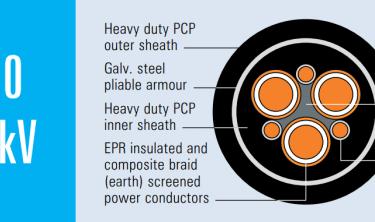
Technical Specifications of Type 260
AS/NZS 1802 Type 260 mining cables incorporate advanced engineering principles to deliver reliable performance in challenging underground environments. The technical specifications encompass conductor design, insulation systems, protective sheathing, and environmental resistance characteristics.
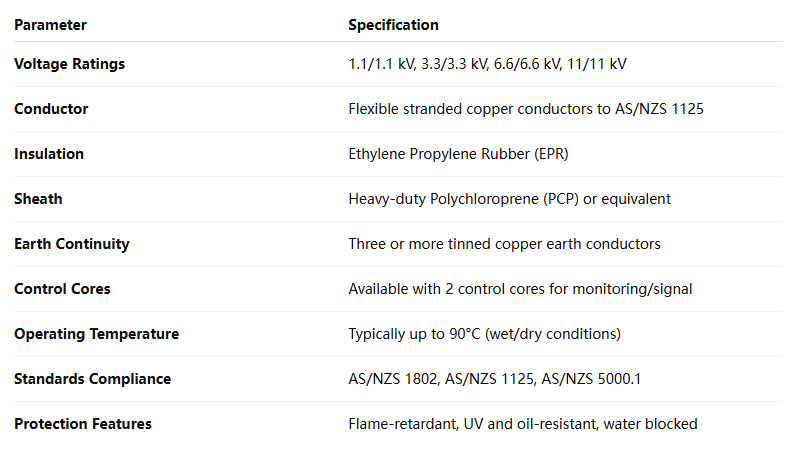

Comparison with Other AS/NZS 1802 Cable Models
The AS/NZS 1802 standard encompasses multiple cable types, each optimized for specific mining applications. Understanding the distinctions between Type 260 and other cable models helps identify the most appropriate solution for particular installations.
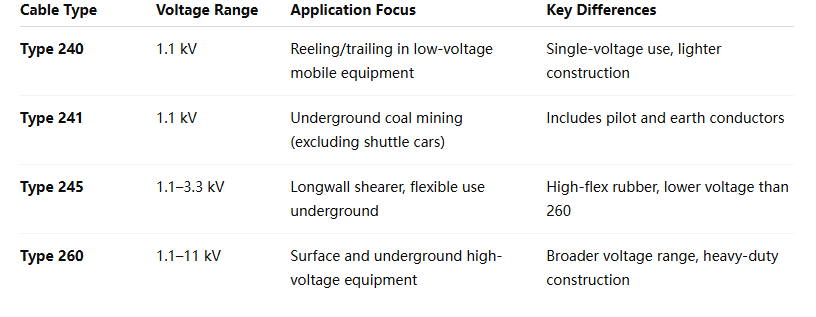

Voltage Models of Type 260
The voltage range for Type 260 (1.1 kV to 11 kV) allows it to serve a variety of use cases from lower-power control systems to high-power distribution in large-scale operations. Below are the key models:
1.1/1.1 kV Type 260.1
The 1.1kV variant represents the entry-level Type 260 configuration, suitable for distribution systems serving mobile equipment, lighting circuits, and low-power machinery. This voltage rating aligns with common mining equipment specifications while providing the robust construction characteristics inherent in Type 260 design. Insulation thickness for 1.1kV models typically measures 1.4mm for conductor sizes up to 35mm², with proportional increases for larger conductors.
3.3/3.3 kV Type 260.3
3.3kV Type 260 cables serve medium voltage distribution systems commonly found in mining operations. This voltage level efficiently serves larger motors, conveyor systems, and ventilation equipment while maintaining reasonable cable dimensions. The 3.3kV insulation system incorporates enhanced dielectric materials with typical thickness of 2.5mm, providing substantial safety margins and long-term reliability.
6.6/6.6 kV Type 260.6
6.6kV variants accommodate higher power applications including main distribution feeders, large motor drives, and primary distribution systems. The increased voltage capability requires more substantial insulation systems, typically 4.0mm thickness, along with enhanced screening systems to manage electric field distribution. These cables often serve as primary feeders from surface substations to underground distribution points.
11/11 kV Type 260.11
11kV Type 260 cables represent the upper voltage limit for this cable type, suitable for primary distribution systems and high-power applications. The 11kV configuration incorporates the most substantial insulation system within the Type 260 family, typically featuring 5.5mm insulation thickness and comprehensive screening systems. These cables often serve as main arterial feeders in large mining operations.
Screen configurations vary according to voltage rating, with higher voltage models incorporating more comprehensive screening systems. Low voltage variants may utilize simple copper tape screening, while 11kV models typically feature combination copper tape and wire screening for optimal electric field control and earth fault protection.
Temperature ratings remain consistent across voltage models, with 90°C continuous operation and 130°C emergency ratings standard across the Type 260 family. Short-circuit ratings accommodate fault currents typical of mining electrical systems, with specific values determined by conductor size and system design parameters.


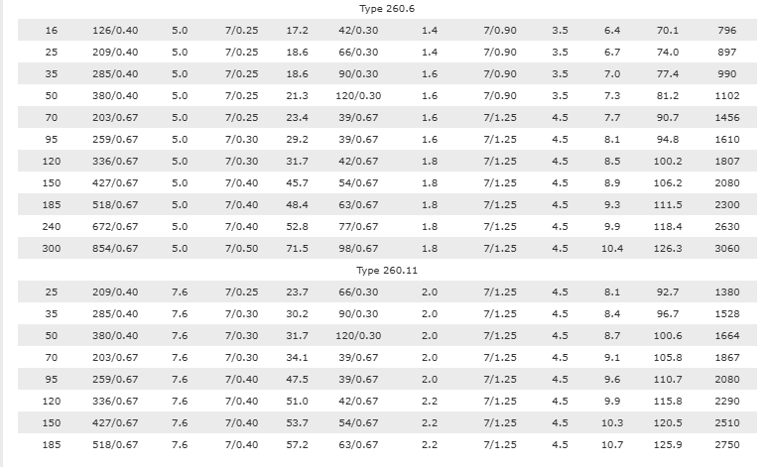

Applications and Benefits
AS/NZS 1802 Type 260 mining cables find extensive application throughout underground mining operations, serving critical roles in electrical distribution, equipment connection, and safety systems. The versatility and robust construction of Type 260 cables make them suitable for diverse mining applications.
Underground distribution systems represent the primary application for Type 260 cables. These systems distribute electrical power from surface substations to underground work areas, requiring cables capable of withstanding moisture, dust, and mechanical stress. A notable case study involves the Olympic Dam mine in South Australia, where Type 260 cables form the backbone of the underground electrical distribution system, successfully operating in harsh conditions for over two decades.
Mobile equipment connections constitute another critical application area. Type 260 cables connect continuous miners, shuttle cars, and other mobile equipment to distribution points, requiring exceptional flexibility and durability. The cables must withstand constant flexing, dragging across rough surfaces, and exposure to hydraulic fluids and coal dust. The Grosvenor mine in Queensland demonstrates successful Type 260 implementation for mobile equipment, with cables maintaining reliable service despite demanding operational conditions.
Conveyor system installations rely heavily on Type 260 cables for motor power and control circuits. Belt conveyor systems spanning several kilometers require reliable electrical connections capable of withstanding vibration, dust, and temperature variations. The cable's robust construction and reliable performance make it ideal for these critical applications where downtime directly impacts production.
Ventilation system applications represent another key use case, with Type 260 cables powering main fans, auxiliary fans, and air monitoring equipment. The reliable operation of ventilation systems is crucial for mine safety, making cable reliability paramount. The cables must operate continuously in dusty, humid conditions while maintaining electrical integrity.
Benefits of Type 260 cables extend beyond basic electrical performance. The standardized construction ensures compatibility with mining electrical systems, simplifying procurement and maintenance procedures. The robust design minimizes failure rates, reducing costly production interruptions and maintenance requirements.
Environmental resistance characteristics provide significant operational advantages. The cables' resistance to moisture, chemicals, and abrasion extends service life and reduces replacement costs. Fire resistance properties enhance safety in underground environments where evacuation may be challenging.
Installation benefits include flexibility that simplifies cable routing through complex underground layouts. The specified bend radius allows navigation around obstacles while maintaining electrical integrity. Standardized connection methods ensure compatibility with existing mining electrical infrastructure.
Economic benefits result from extended service life, reduced maintenance requirements, and standardized specifications that facilitate bulk purchasing and inventory management. The proven reliability of Type 260 cables in mining applications provides confidence in long-term electrical system performance.
Frequently Asked Questions
What is the maximum operating temperature for AS/NZS 1802 Type 260 cables?
Type 260 cables are rated for continuous operation at 90°C conductor temperature, with emergency operation up to 130°C for limited periods. Short-circuit conditions allow temperatures up to 250°C for fault clearing times typical of mining protection systems. These temperature ratings ensure safe operation across the full range of mining environmental conditions.
How does Type 260 cable construction resist moisture ingress?
Type 260 cables incorporate multiple moisture barriers including water-resistant insulation compounds, sealed conductor interfaces, and impermeable outer sheaths. The XLPE or EPR insulation materials resist water absorption, while the outer sheath provides the primary moisture barrier. Some variants include water-blocking compounds between cable layers for enhanced moisture protection.
What is the minimum bend radius for Type 260 cables during installation?
The minimum bend radius typically equals 12-15 times the cable diameter, depending on specific construction and conductor size. For example, a 50mm diameter Type 260 cable requires a minimum bend radius of 600-750mm during installation. This specification ensures cable integrity while providing installation flexibility in confined underground spaces.
Are Type 260 cables suitable for direct burial applications?
Yes, Type 260 cables are designed for direct burial in underground mining environments. The robust outer sheath resists soil chemicals, moisture, and mechanical stress associated with underground installation. Some variants include additional armor for enhanced mechanical protection in particularly challenging burial conditions.
What screening systems are used in higher voltage Type 260 cables?
Higher voltage Type 260 cables typically incorporate copper tape screening combined with copper wire screening for comprehensive electric field control. The screening system provides EMI protection, earth fault detection capability, and uniform electric field distribution. Screening resistance values are specified to ensure effective earth fault protection coordination with mining protection systems.
How do Type 260 cables perform in fire conditions?
Type 260 cables incorporate flame-retardant materials that limit fire propagation and reduce toxic gas emission. Many variants comply with LSZH requirements, minimizing halogenated gas release during fire conditions. The cables maintain circuit integrity for specified periods during fire exposure, supporting emergency systems and evacuation procedures.
Conclusion
AS/NZS 1802 Type 260 mining cables represent a proven solution for medium voltage electrical distribution in underground mining operations. Their balanced combination of electrical performance, mechanical durability, and environmental resistance makes them the preferred choice for applications ranging from 1.1kV to 11kV across diverse mining environments.
The technical specifications of Type 260 cables demonstrate careful engineering optimization for mining conditions. From the stranded copper conductors and advanced insulation systems to the protective sheathing and screening arrangements, every component contributes to reliable long-term performance in challenging underground conditions.
Comparison with other AS/NZS 1802 cable types reveals Type 260's position as the optimal general-purpose mining cable, providing superior performance compared to basic Type 250 cables while offering better value than specialized Type 270 or Type 280 variants for typical mining applications.
The availability of multiple voltage ratings within the Type 260 family ensures compatibility with diverse mining electrical systems. Whether serving 1.1kV mobile equipment circuits or 11kV primary distribution systems, Type 260 cables provide consistent performance characteristics and standardized installation procedures.
Real-world applications across major mining operations demonstrate the proven reliability of Type 260 cables in critical underground systems. From the Olympic Dam copper mine to Queensland coal operations, these cables continue to provide dependable service in some of the world's most challenging mining environments.
The economic and operational benefits of Type 260 cables extend beyond initial installation costs. Extended service life, reduced maintenance requirements, and proven reliability contribute to lower total cost of ownership while supporting continuous mining operations.
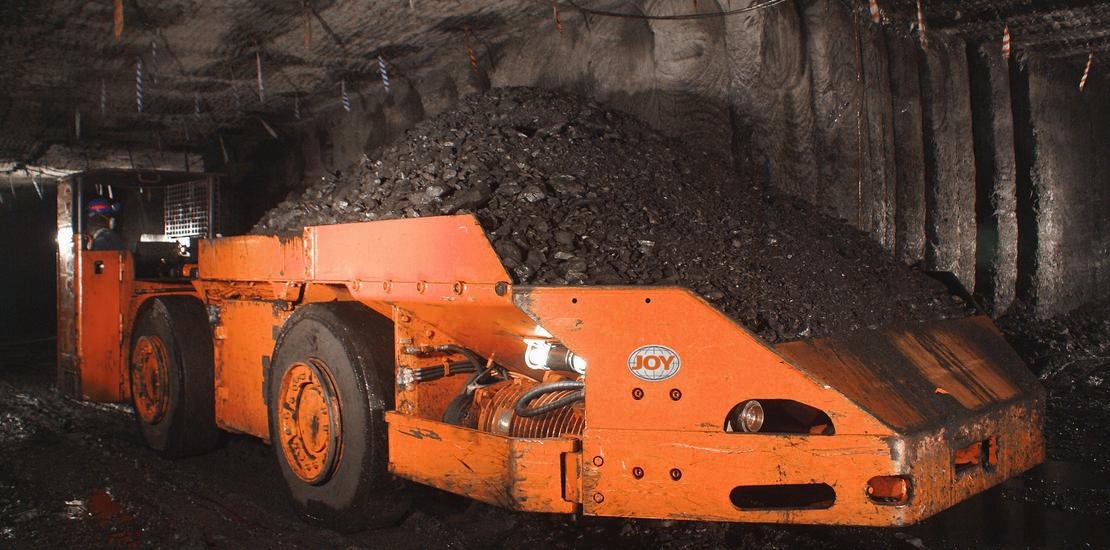

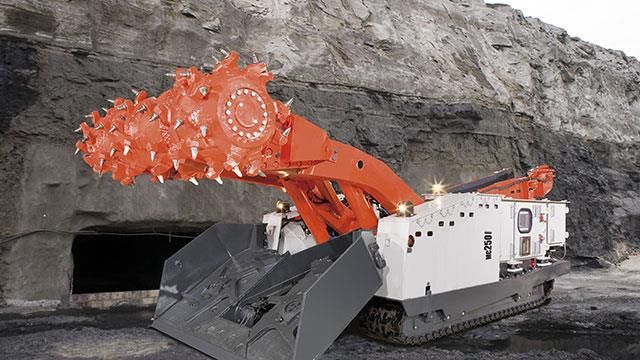


Email Address: Li.wang@feichuncables.com
© 2025. All rights reserved.


One-click to Quickly Contact
Products
Offshore & Marine Cable
XLPE Cable
Contact
Company
Location:
Building A Private Science and Technology Park, Hefei Economic and Technological Development Zone, Anhui Province, China
